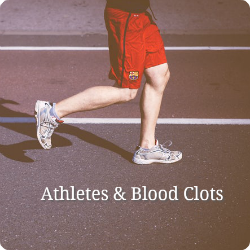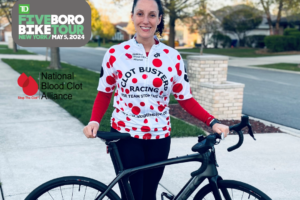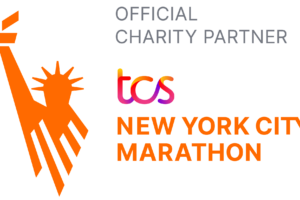Since a sedentary lifestyle can increase your risk for blood clots, it’s easy to think that perhaps the most active and physically fit people, including professional athletes and fitness enthusiasts alike, are not at risk for blood clots. In truth, blood clots can affect anyone, even people who are in good shape, or physically fit. To help prevent blood clots, it’s important to understand the risk factors and know the signs and symptoms. If you are an athlete or physically active, know and understand your risk for blood clots too, because you are not immune. Blood clots can be prevented and when they occur can be safely treated. Sharing information helps to save lives, and it’s important to share this information with your family and friends so you can help get the word out about life-threatening blood clots.
July e-Newsletter Highlights:
- Read more about the issues surrounding athletes and blood clots.
- The American Society of Hematology is seeking comments on draft guidelines about VTE prevention in surgical hospitalized patients. HCPs, patients, caregivers, and the public have until 7/25 to add comments.
- Steven is a cyclist who felt strange tightness in his right calf, and mild discomfort behind his knee, which then progressed to swelling that seemed like an ankle sprain. Read his story.
- Support NBCA’s mission by becoming a monthly donor.
- Upcoming events
- More news and information






